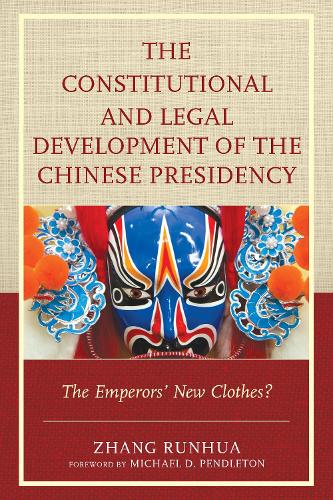
The Constitutional and Legal Development of the Chinese Presidency: The Emperors' New Clothes
(Hardback)
Publishing Details
The Constitutional and Legal Development of the Chinese Presidency: The Emperors' New Clothes
By (Author) Zhang Runhua
Foreword by Michael D. Pendleton
Bloomsbury Publishing PLC
Lexington Books
5th November 2014
United States
Classifications
Professional and Scholarly
Non Fiction
Political leaders and leadership
303.48251
Physical Properties
Hardback
244
Width 160mm, Height 234mm, Spine 21mm
435g
Description
This book investigates the legal and political evolution of Chinese presidency from the period of its forerunner in the 1930s, its establishment in 1954 to its abolition in 1975, and its restoration in 1982, and discovers that the presidency has evolved from a traditional Chinese title into a political position and then a state institution that has the constitutional appearance of a Western style semi-presidency. However, politically it has functioned in a Stalinist party-state with Chinese characteristics, whose candidates have been produced according to the CCPs step-by-step succession rules designated by the party leaders. Real political decision-making power has not only been limited by these succession rules, but also by the president's role and status within the CCPs collective supreme body. The author weaves the themes of Chinese politics and law together and explores not only the political implications of those constitutional provisions and amendments regarding this office, but also the constitutional significance of the CCPs major political practices, such as Mao Zedongs power of last say, his idea of two fronts, his controversial abolition of the chairmanship, Deng Xiaopings idea of the nucleus of leadership, and diplomacy of the head of state by Chinese presidents, thus illuminating how law has been made in those unpredictable political environments and how politics has been defined by law. The author concludes that the office of president is the key to understanding how power in China derives first from the CCP, second from the military, and third from the government loosely prescribed by laws. Even more important, the millennia-old Confucian concept of the charismatic leader is alive and well. While all eyes are on the new incumbent, his predecessors have loomed large and continue to exert significant influence on him. Underlining decades of constitutional evolution and shifting political dynamics have been the changing foreign influences and local demands on China. With so many variables at play, the office of the president will certainly continue to evolve.
Reviews
Zhang traces the development of the presidency (chairmanship) of the People's Republic of China from the 1940s to the present. Zhang divides the examination into three periods: the years around the establishment of the 1949 Common Program, the years of the 1954 constitution, and the years since the enactment of the 1982 constitution. Zhang's analysis of each period focuses almost exclusively on the legal and constitutional parameters of the authority of the presidency. Zhang notes . . . the contextual relationship between the leadership of the CCP and top government officials . . . [and] the role of the president and that of the premier. * CHOICE *
Author Bio
Zhang Runhua is lecturer at Shanghai Finance University.
